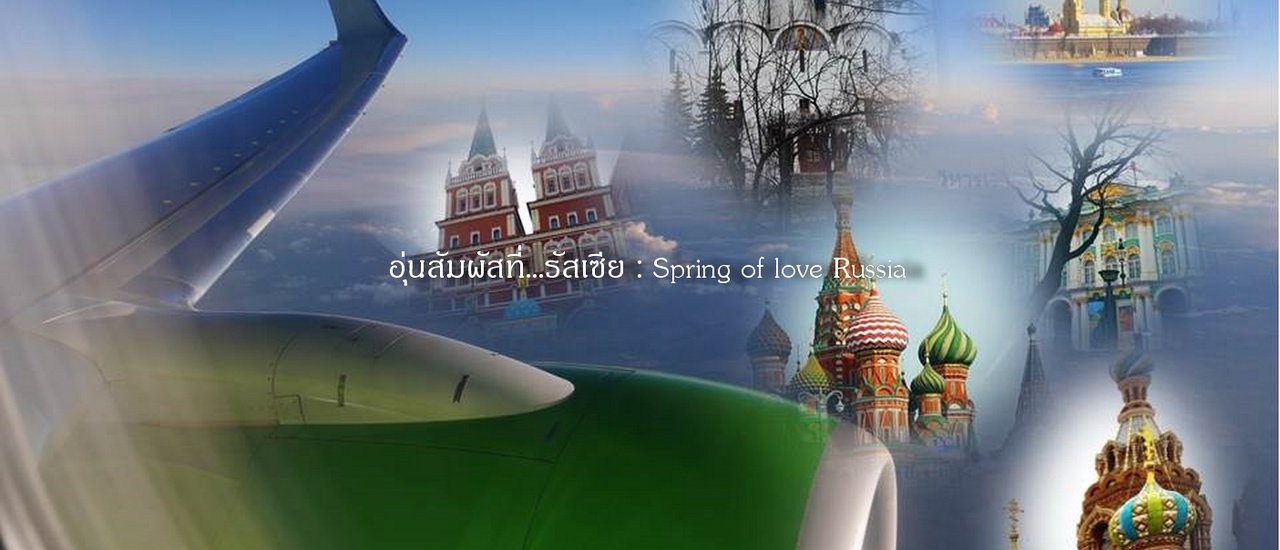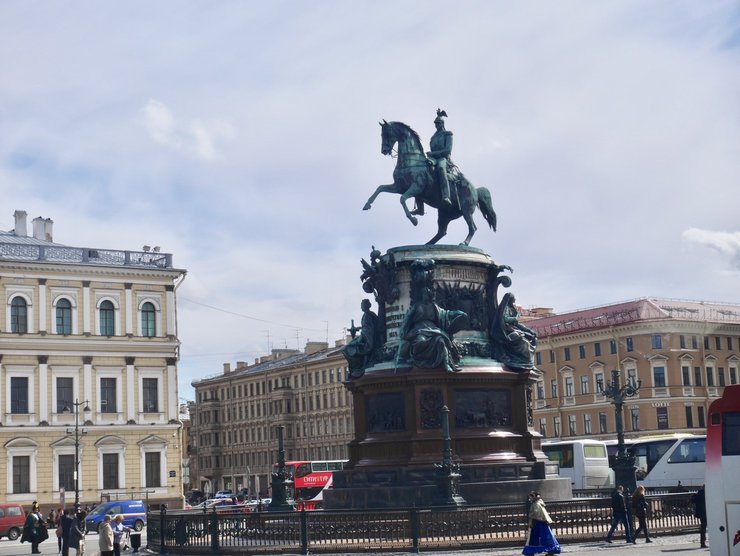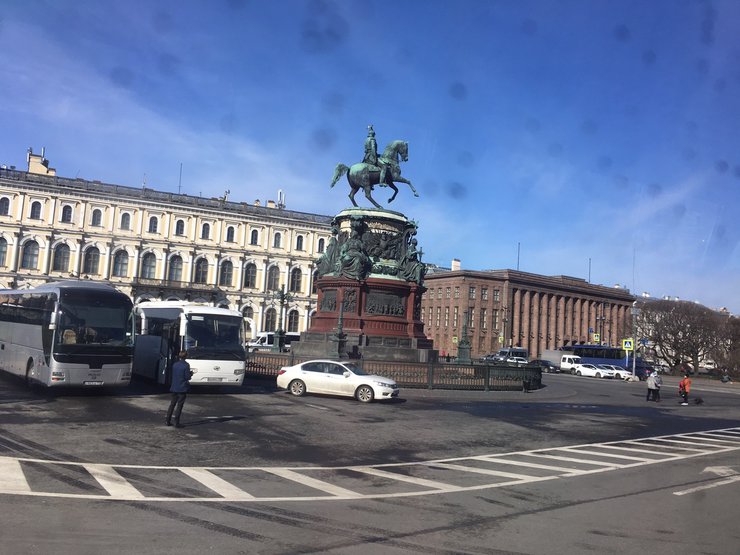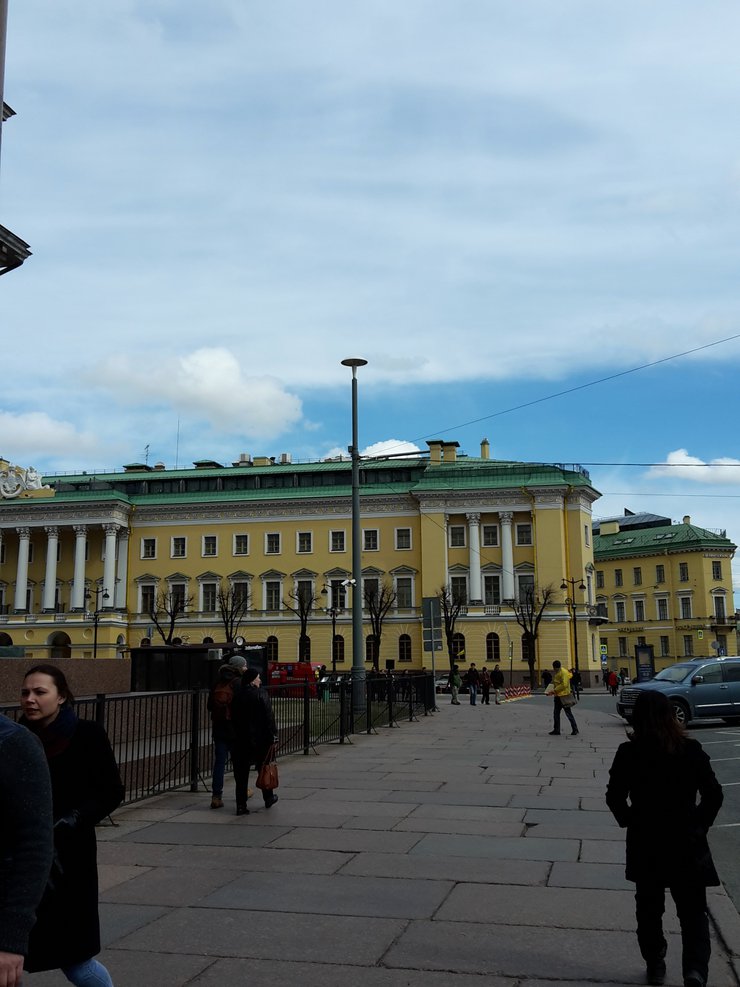Section 3: St. Isaac's Cathedral and the Winter Palace (Hermitage Museum)
Hello, today we will continue our story from episode 2. We have already visited two places: Peter and Paul Fortress and the Church of Christ's Resurrection. It is still the first day of our trip. Let's continue to St. Isaac's Cathedral, another place in St. Petersburg that tourists must visit and should not miss. On the way, even though we don't know how big the city is, looking from the car, we can guess that the car is driving around important places that are not far apart. For those who want to travel on their own, it shouldn't be difficult. Prepare good information and you can travel completely. Today the weather is quite good. The sky is blue. The cold is still there.
Let's get to know this place a little better so that we can have a meaningful and valuable travel experience. After all, we've crossed oceans, seas, and skies to get here, so let's create some beautiful memories to record. St. Isaac's Cathedral, with its grand exterior, resembles a church or a religious structure. The golden dome at the top shines brightly, and above it, a silver-colored section extends upwards. There are two smaller domes on either side, and the front facade features tall supporting columns and a gable with intricate carvings. According to information, the golden dome is coated with approximately 100 kilograms of pure gold, which was then covered with mercury for durability. However, this process tragically resulted in the deaths of many workers due to mercury poisoning. The surrounding trees, although currently appearing dry, are likely reflecting the seasonal changes.
Exterior view of the temple


The cathedral was renovated during the reign of Alexander I after being partially destroyed in World War I. It was previously used for the coronation of Tsar Peter the Great and Catherine. Construction took 40 years, reportedly due to the builders' belief that completing it would bring death. The cathedral is named after Saint Isaac of Dalmatia, the patron saint of Peter the Great. Construction materials, including 50,000 piles, were brought from Finland and transported by water. Traditional methods were used to erect the pillars, which involved scaffolding and manpower to lift them into place. There are a total of 112 pillars, both large and small.


The statue on the front of the temple is a cast of Saint Isaac blessing Emperor Theodosius and his wife Flacilla.

Some sources mention the possibility of climbing a small staircase to the top of the temple for a panoramic view. However, we did not attempt this ascent.

The grand entrance door and the subsequent door are crafted from oak and bronze, adorned with intricately carved religious figures. The columns and ceiling are embellished with elaborate patterns, while the walls are composed of marble.

The trees in front of the temple have stood alongside the temple for a long time.

The sheer size of each pillar


The entrance door (this channel is closed) is open to the main door.


The intricate patterns and sculptures adorning the ceiling.

Visiting the interior of the temple requires a ticket. Once inside, you will be overwhelmed by the beauty and grandeur of the architecture.



The interior features a model of the building's construction.



The statue depicts the French architect Auguste de Montferrand, the designer of the building.

This is an example image showing the details of how to create a mosaic using the image of Saint Isaac.

The interior is adorned with multicolored marble, intricate carvings, and painted ceilings. Bronze statues, gilded materials, and mosaics embellish the space. Stained glass windows and verdant columns add to the visual splendor. Images of Jesus and other narratives, while perhaps not fully comprehensible to visitors, offer a glimpse into the artistry and imagination of the creators. Their legacy lives on in this magnificent testament to human creativity.

Gazing through this sacred portal, one feels transported to the presence of the divine.

The golden door is adorned with paintings.

The curved roof is adorned with a large chandelier, which is suspended from the ceiling. The chandelier appears to be quite heavy, as it is supported by two additional cables on each side.

The beautiful stained glass, resembling sky-blue windows beneath the dome, is truly breathtaking.


This dove, perched on the ceiling above the highest dome, symbolizes purity and peace.







We spent a considerable amount of time inside. Upon exiting, we encountered an equestrian statue of Tsar Nicholas I, symbolizing his victory over Sweden.



Buildings surrounding the temple.





St. Isaac's Cathedral is one of the most important landmarks in St. Petersburg. Its grandeur is undeniable, and a visit to this magnificent structure leaves one wanting to learn more about its history and significance. This pursuit of knowledge enriches our travel experience, adding depth and meaning to our exploration. Today, the weather is bright and the sky is clear, although it is quite chilly.
We left the place to have lunch.
Let's take a look at the cityscape together. The buildings and surrounding environment have a rigid, austere, and emotionless appearance, but the vintage color scheme softens the overall impression.



This river offers sightseeing cruises.

In the afternoon, we visited the Winter Palace.
The exterior of the Winter Palace, as seen from various angles as the car passes by, is painted blue with white window and column trim. (Looking back at the photos later), it is easy to confuse it with the Catherine Palace, which is painted a similar shade of blue.
The Winter Palace, one of the five buildings of the Hermitage Museum, is a three-story structure with over 1,000 rooms. It once hosted King Chulalongkorn of Thailand during his visit to Russia. Built during the reign of Empress Elizabeth as her residence, she died before its completion. It later became the residence of Catherine II, who expanded the building due to her extensive collection of treasures and valuables.



After exiting the building, we will walk out to the Alexander Granite Column or Palace Square, a large square surrounded by important buildings such as the Military Staff Building, the Navy Headquarters Building, and the Winter Palace, also known as the Hermitage Museum.



In the afternoon, we encountered rain.

Visiting the interior requires a ticket and strict entry regulations. Visitors must pass through a security scanner, check in their coats, and have their electronic devices, cameras, and mobile phones thoroughly inspected.
Accepting winter jackets and coats for storage.

With over 1000 rooms inside the building, we only visited about 20. It's a good idea to be prepared physically, as there is a lot of walking and not many places to rest. Each room is beautiful and impressive.








































These images showcase a mere fraction of the countless treasures adorning each chamber. Each room boasts a unique and exquisite interior design, characterized by intricate details, breathtaking beauty, opulent grandeur, and a rich historical narrative.
After visiting the interior of the museum or the Winter Palace, the exit door is located at the back. As you walk out of the door, you will come to a large square called Palace Square and the Alexander Column. However, on that day, we also witnessed a Russian military ceremony. It must have been an important day for Russia, as there was a ceremony similar to a military parade.




Horse-drawn carriages can be seen in the surrounding area.

Conclusion
Today, we visited several significant locations, each with its own unique beauty and grandeur. What they all shared was a sense of awe-inspiring magnificence, a testament to the exceptional craftsmanship of their creators. These skilled artisans, masters of their respective artistic disciplines, have left behind a legacy that continues to inspire and amaze generations, attracting visitors from all corners of the globe.
This evening, there was a heavy downpour.
This concludes Chapter 3. We hope you will continue to follow the story in the next chapter.
Hello.
enjoyinglife
Tuesday, October 8, 2024 10:29 AM
















